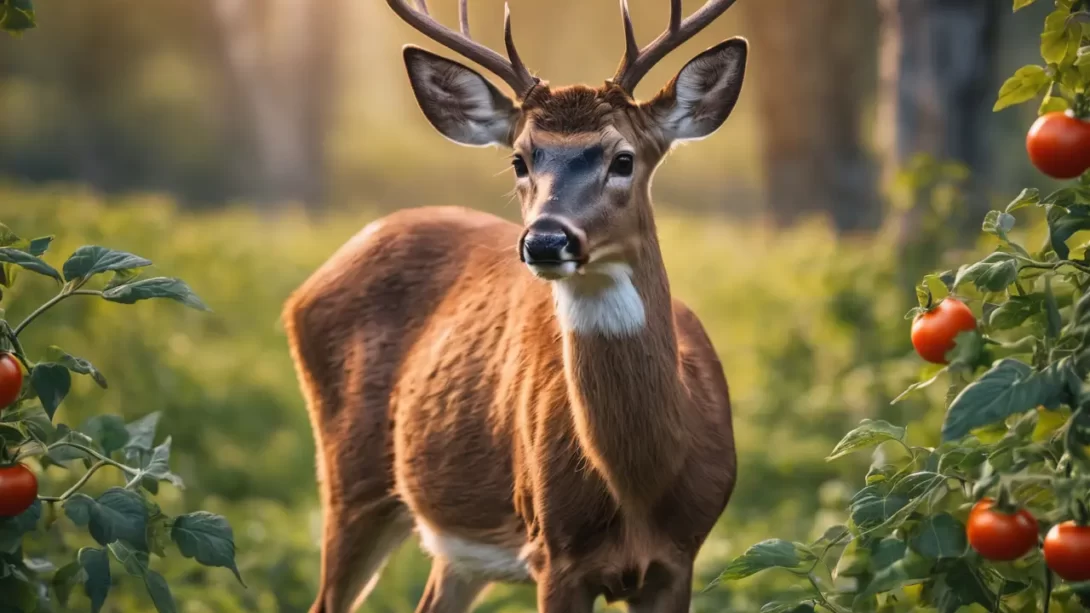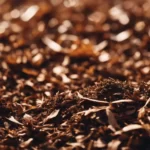Gardening enthusiasts often face the challenge of protecting their beloved plants from wildlife, particularly deer. Tomato plants, a staple in many vegetable gardens, are not exempt from this threat. Understanding deer behavior and their potential impact on tomato plants is crucial for gardeners. This article explores how deer interact with tomato plants and provides practical advice for safeguarding your garden.
Deer Behavior and Dietary Preferences
Deer are adaptable creatures, and their diet varies depending on the environment and available food sources. Generally, deer feed on a mix of grasses, leaves, stems, fruits, and nuts. However, in residential areas, their diet often expands to include garden plants and vegetables, especially when their natural food sources are scarce.
Seasonal changes significantly influence deer feeding habits. In spring and summer, they prefer young, tender growth, which is abundant in gardens. Tomato plants, with their succulent leaves and stems, can be particularly enticing during these seasons. As fall approaches and natural food sources dwindle, deer may become more daring, venturing into gardens in search of sustenance. The relative availability of food in their natural habitat versus your garden plays a pivotal role in determining whether deer will target your tomato plants.
Tomato Plants and Their Attraction to Deer
Tomato plants (Solanum lycopersicum) are known for their nutritious and flavorful fruits, making them a popular choice among gardeners. However, their appeal extends beyond human preferences. Deer may be drawn to tomato plants for various reasons, including the plants’ leaves, stems, and ripe fruits.
Deer incidents with tomato plants can vary based on geographical location and local deer populations. In some areas, gardeners report frequent visits by deer to their tomato patches, while in others, the plants remain untouched. The inconsistency in deer behavior makes it difficult to predict their interest in tomatoes. Gathering insights from local gardeners and wildlife experts can provide valuable context on the likelihood of deer targeting tomato plants in your specific area.
Factors Influencing Deer Visits to Tomato Gardens
The likelihood of deer visiting a garden to feast on tomato plants is influenced by several key factors. The location and layout of your garden can play a significant role. Gardens that are close to wooded areas or natural deer habitats are at higher risk. Similarly, gardens with easy access or those located along deer pathways are more likely to attract these animals.
The health and growth stage of tomato plants also affect their vulnerability. Lush, well-maintained plants with abundant fruits are more inviting to deer. Additionally, the stage of growth can be a factor; young, tender plants are often more appealing than mature, tougher plants.
Surrounding vegetation and the availability of alternative food sources also influence deer behavior. A garden surrounded by a variety of plants, including some that are less palatable to deer, might fare better. Conversely, a garden that stands out as a green oasis in a depleted environment could become a prime target for hungry deer.
Strategies to Protect Tomato Plants from Deer
Protecting your tomato plants from deer requires a multi-faceted approach. One of the most effective methods is fencing. A fence needs to be high enough (at least 8 feet) to prevent deer from jumping over it. Various types of fencing materials are available, including wire, wood, and mesh. It’s important to consider the aesthetic impact as well as the practical effectiveness when choosing fencing for your garden.
Deer repellents are another common strategy. These can range from commercial products to homemade concoctions. Common ingredients in homemade repellents include garlic, soap, and hot peppers. The effectiveness of repellents can vary, and they often need to be reapplied after rain or watering. It’s also important to rotate repellents to prevent deer from becoming accustomed to them.
Incorporating deer-resistant companion plants into your garden can provide a natural deterrent. While no plant is completely deer-proof, certain species are less appealing to them. Planting herbs like lavender or sage, or flowering plants like marigolds and snapdragons around your tomato plants can help keep deer at bay. These plants not only deter deer but also add diversity and beauty to your garden.
Alternative Approaches to Deter Deer
Beyond fencing and repellents, there are several other strategies to deter deer from your tomato garden. Physical deterrents like netting can provide a barrier over your plants, protecting them from deer while still allowing sunlight and rain to penetrate. Scare tactics, such as installing motion-activated sprinklers or hanging shiny objects that move in the wind, can also be effective in startling and deterring deer.
Behavioral deterrents involve modifying the environment to make it less inviting for deer. This can include maintaining a consistent human presence in the garden, using noise-making devices, or installing lights that make nocturnal visits less comfortable for deer. However, deer can become accustomed to these deterrents over time, so it’s beneficial to change or rotate them regularly.
Community approaches can also play a role in managing deer populations and their impact on gardens. Neighborhood cooperation in implementing deer deterrent strategies can be more effective than individual efforts. Additionally, understanding and participating in local wildlife management practices can contribute to a more balanced coexistence with deer in the area.
Conclusion
Deer can pose a significant challenge to tomato gardens, but understanding their behavior and preferences can help in developing effective strategies to protect your plants. From physical barriers like fencing and netting to the use of repellents and deer-resistant companion plants, there are numerous ways to deter deer. Alternative methods, including scare tactics and community efforts, can further enhance your garden’s defenses.
Gardening alongside wildlife, particularly deer, requires patience, persistence, and a willingness to adapt. By employing a combination of strategies, you can successfully protect your tomato plants and enjoy a bountiful harvest. Remember, the goal is not to eliminate wildlife from your garden but to find a harmonious balance where both your plants and the local fauna can thrive.




